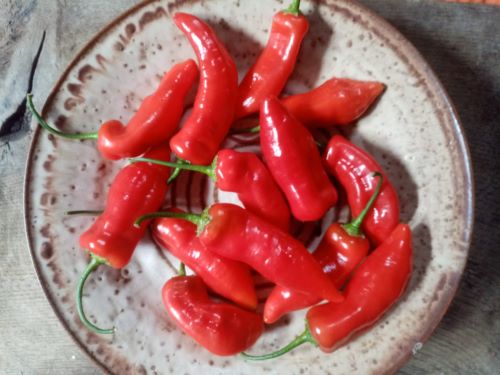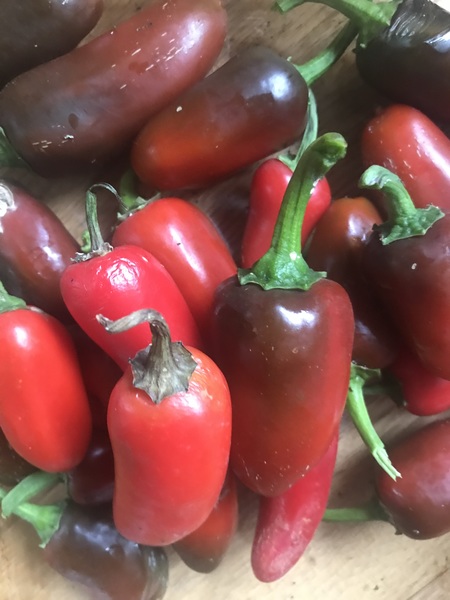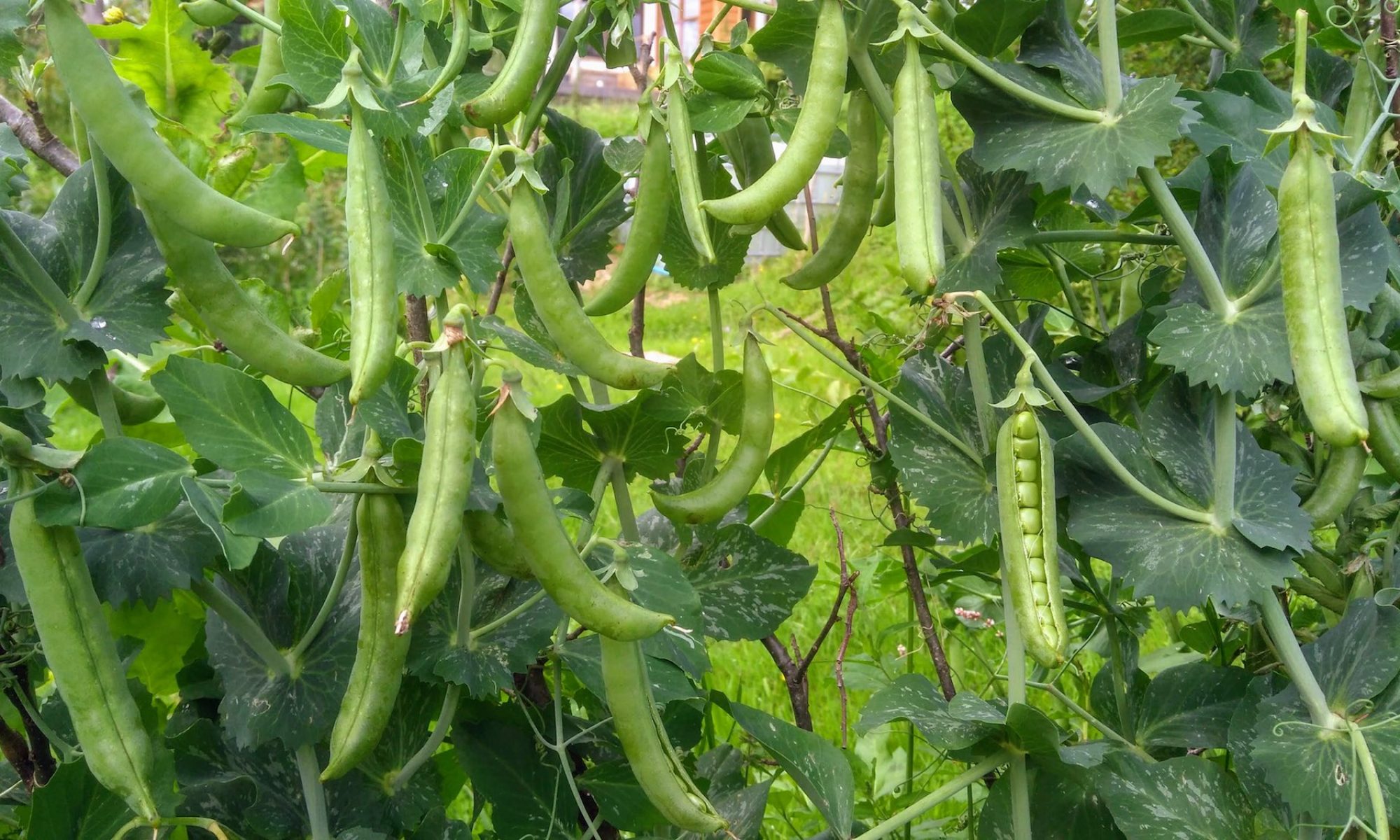Chilli Pepper: De Cayenne

Cayenne is your classic ‘kitchen’ chilli, with a good amount of heat and a great flavour. The striking red peppers can grow up to 6” long, and can be harvested and eaten green or red. Plants can grow up to 2ft high and give an excellent yield.
Grown by Wales Seed Hub member Carolyn Moody on her One Planet smallholding in Pontyates, Wales.
16 seeds per pack.
Seed Story: Cayenne is your classic ‘kitchen’ chilli – bright, shiny red and between 2” to 5” long, they look great in a greenhouse or polytunnel. We grow this variety for the Wales Seed Hub as they’re pretty much foolproof – super productive and ripening really early, which means you’ll still get a really good crop even in the shortest, dullest, coolest of Welsh summers! They have a great flavour and a good amount of heat without being too hot. Great in all kinds of cooking, you can pick and use them when green too – a staple of many Indian recipes. And for the glut of chillies you may end up with at the end of the season? Well, you can’t beat a few jars of homemade chilli jam.
Sweet Pepper: Sweet Yellow Stuffing Pepper

These peppers produce a large crop of small bright yellow sweet peppers which are great for stuffing with your favourite savoury mix or soft cheese. They grow best with some protection.
Grown by Wales Seed Hub member Maggie Carr in South Wales.
16 seeds per pack.
Seed Story: These sweet miniature bell peppers from Pennsylvania grow on small bushes, the fruit being only 3 –-5cm in size but, as their name suggests, they can be stuffed to form tasty appetisers, although they can also be pickled or grilled!
Sow the seeds in a seed tray and lightly cover them with sieved compost. Keep the seeds warm and moist – a propagator is ideal. When sprouts appear move them to a sunny window or heated greenhouse to grow on. When the seedlings have formed their first true leaves then prick them out into individual pots and pot on as required. These plants grow best with some protection in a greenhouse or cold frame Peppers need rich moist soil and warm sunny conditions to flourish. Best sown in very early spring (February or the beginning of March at the latest) as these plants need a long growing season.
Chilli Pepper: Aji Delight

This is a tasty, heatless chilli that bears prolifically in the Welsh climate. It produces many, small, bright red, ripple-textured fruits that you can eat like a sweet pepper.
Grown by Wales Seed Hub member Tilly Gomersall in mid Wales.
20 seeds per pack.
Chilli Pepper: Jalapeno

Early maturing and very productive chilli. mild to medium hot (2.500-5000shu). Dark green, maturing to red fruits.
Grown using agroecological principles by Wales Seed Hub member Peni on her One Planet smallholding in Carmarthenshire.
Approx 16 seeds per packet.
Why not save your own seeds!? All our seeds are open pollinated, non-hybrid varieties.
See our seed saving guidelines here: Save Your Own Seeds
Growing instructions – Peppers
Both sweet peppers and chilli peppers need a long growing season and so it is best to start them early in a propagator which has a temperature of 25 – 30 degrees C. I start mine at the end of January, but anytime in February should be OK, however early March is the latest really to get a good crop. Make sure that the propagator is not in direct sunlight as this can affect the temperature greatly. Grow lights can be really helpful to keep the seedlings stocky. Once they have germinated then prick them out into modules or small pots to grow on. Don’t overpot them as the plants seem to like a slightly restricted growing environment for their roots, but you may need to pot them on once during the growing on period. You can grow them on at a lower temperature, but keep them warm or they will sulk. Keep them warm till mid to late April when the greenhouse temperatures should be warm enough but if your conditions are chilly at night then take measures to protect them by bringing them back in the house overnight. By May you should be able to plant them in a larger pot or in a greenhouse bed. Keep the plants fed on a weekly basis – I use homemade comfrey feed but seaweed feed is also good.
Seed grown using agroecological principles. We are licenced to sell seed and issue plant passports. Reg number: 7710.
